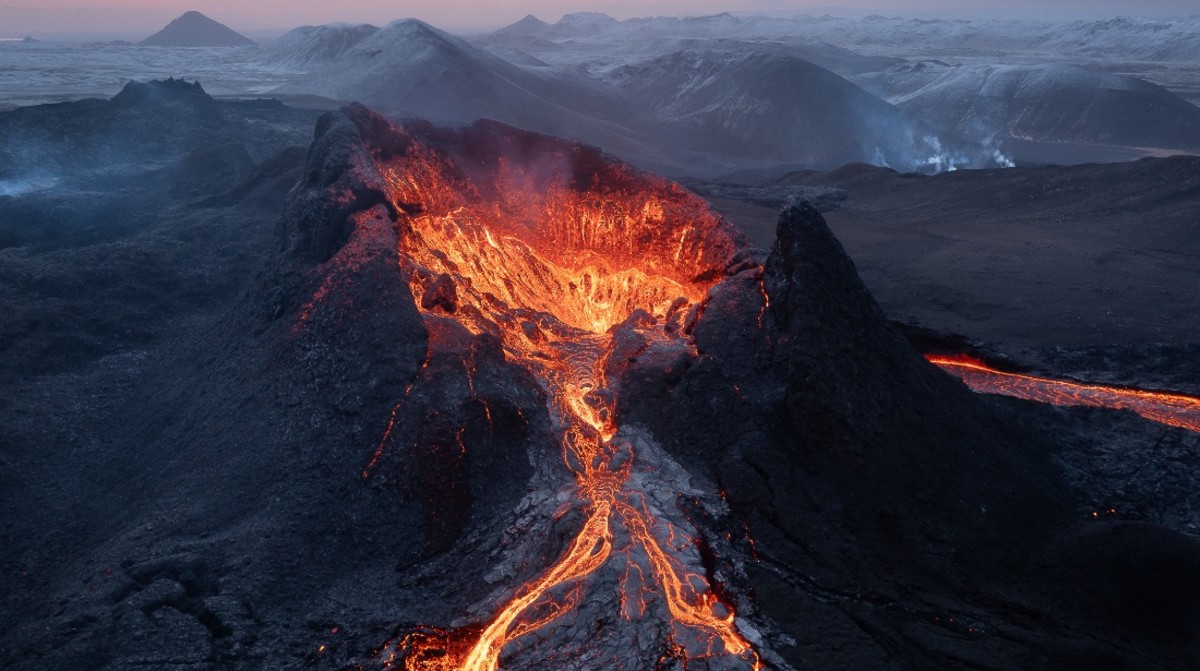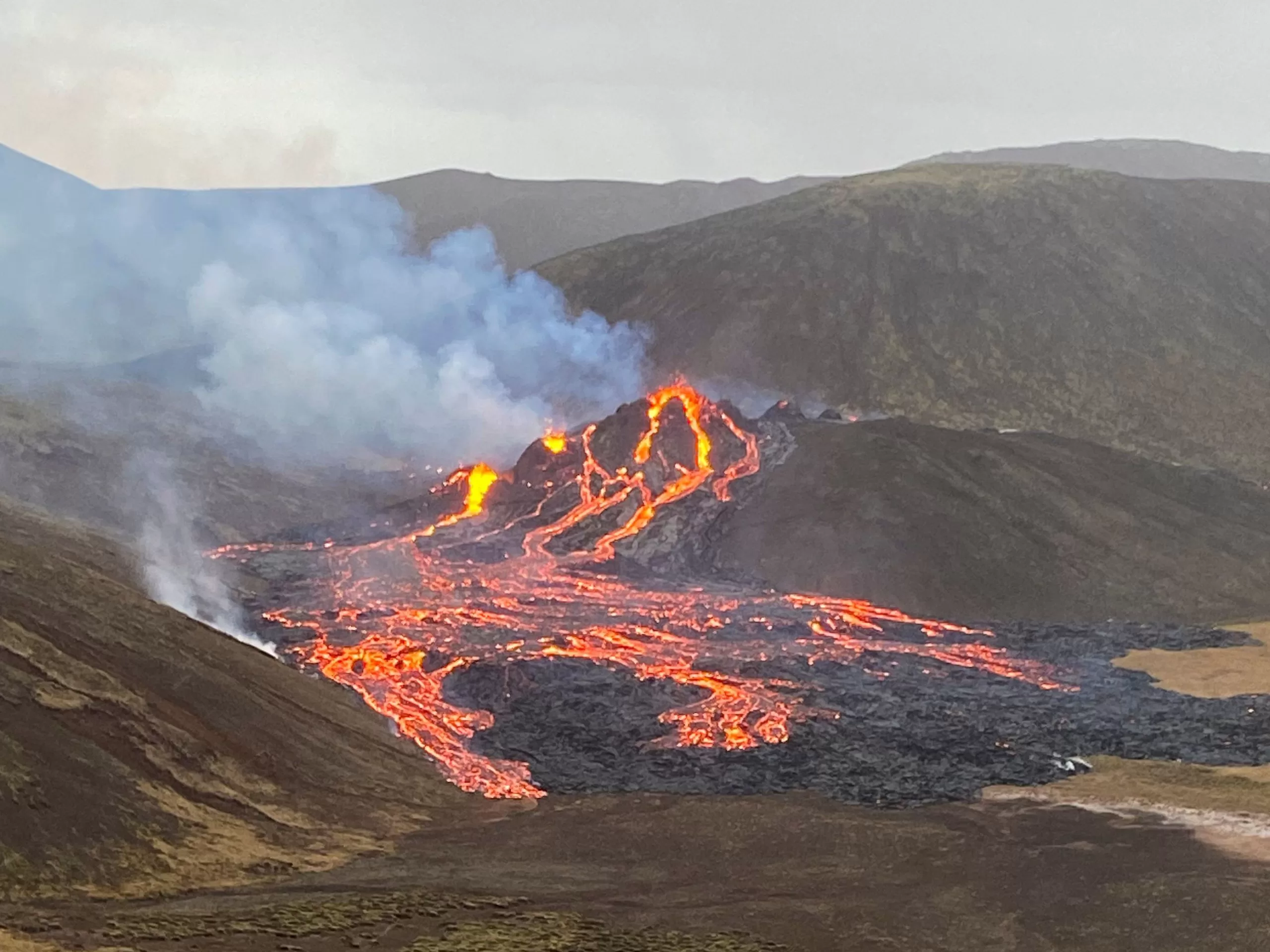According to a statement released by the Icelandic Meteorological Office on Monday, a volcano on the Reykjanes peninsula of Iceland is erupting.
After an earthquake that occurred about an hour earlier, the eruption started at around 10 p.m. local time.
According to the meteorological office, the eruption can be seen on webcams and seems to be near Hagafell, which is approximately 3 kilometres north of Grindavík.
It was announced by the meteorological office that “a Coast Guard helicopter will take off shortly to confirm the exact location and size of the eruption.”
A volcanic eruption threatened to destroy Grindavík and surrounding settlements, so earlier this year locals were forced to flee their homes.
A national state of emergency was declared at the time due to a strong wave of hundreds of earthquakes, as reported by the country’s Civil Protection Agency, which also stated that a magma tunnel that could potentially reach Grindavík was forming.
The agency stated, “It is evident that we are dealing with circumstances that we Icelanders have not encountered previously, at least not since the eruption in Vestmannaeyjar in 1973,” alluding to an eruption that occurred without notice in 1973 and destroyed 400 houses.

About four miles north of Grindavík, the well-known Blue Lagoon is a geothermal spa that attracts tourists with its steaming water. Last month, it closed for a while due to the first indications of a possible eruption.
In November, authorities also announced that they were digging a protective ditch around a geothermal power plant, approximately four miles from Grindavík, which supplies the 30,000 people living on the peninsula with electricity and geothermal water for heating their homes.
Iceland is situated on a tectonic plate boundary that is constantly rupturing, pushing Eurasia and North America apart along the Mid-Atlantic Ridge. Thirty-two of its volcanoes are active.
As a result, the nation is used to volcanic eruptions, even though they typically take place far from populated areas, in the wilderness. In 2014, the country’s central Báríarbunga volcanic system erupted, covering 84 square kilometres (32 square miles) of highland without causing any damage to any communities.
In 2021, the volcanic system Fagradalsfjall erupted for the first time in over 6,000 years. In addition, it posed no threat to populated areas, and in fact, as tourists flocked to see the volcanic eruption, it turned into a tourist attraction.
Since a volcanic eruption is unlikely to involve the glacial ice that resulted in a massive ash cloud, experts don’t expect it to cause the same level of chaos as the Eyjafjallajökull volcano’s 2010 eruption.
The ash released by the 2010 eruption threatened to stall aeroplane engines and cause electrical failure, resulting in about 100,000 flights being cancelled and affecting two million people.
Lionel Wilson, an Emeritus Professor of Earth and Planetary Sciences at Lancaster University, told CNN last month that “Eyjafjallajökull involved an eruption through or next to glacial ice that melted and provided water that made the eruption more explosive than it would have been.” This explains the high eruption plume and very wide dispersal of ash.


